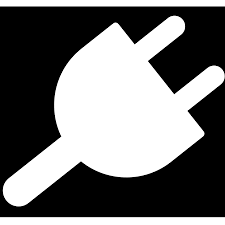Los Angeles Is Building an e-Highway
The road would eliminate truck emissions, and is being tested in a corridor that connects the port to downtown.
Nate Berg Sep 30, 2014 Atlantic CItyLab
The neighboring ports of Los Angeles and Long Beach bring in roughly 40 percent of the goods shipped to the United States. Once there, the first leg of their journey to warehouses and stores and cities across the country is a 20-mile stretch of roadway between the ports and downtown L.A. known as the Alameda Corridor, used almost exclusively by large trucks hauling goods between the ports and various freight rail links. The corridor's high concentration of diesel-truck traffic has created a similarly high concentration of pollution in the surrounding areas, causing health and air-quality concerns for nearby residents and the region as a whole.
But a new road design project dubbed the e-highway is aiming to reduce and maybe even eliminate the pollution problems caused by all this truck traffic. The experimental system is being built along a mile of the corridor to test how highly polluting diesel truck traffic could instead run on emission-free electric power. If successful, this demonstration could offer a solution to pollution-related problems along the Alameda Corridor and other high-traffic roadways all over the world.
The e-highway consists of an overhead catenary system that will run along the outside lanes of both sides of the road, sort of like the overhead wires that provide power to electric buses, trolleys, and trains in cities. Specially outfitted hybrid or all-electric trucks can attach to the system using automated current-transfer devices called pantographs. Once connected, the trucks will pull all their power from the overhead lines, effectively becoming emission-free vehicles.
The $13 million project is a collaboration between the electronics and engineering company Siemens and the South Coast Air Quality Management District, the public agency tasked with controlling air pollution in Orange County and the urban parts of Los Angeles, Riverside, and San Bernardino counties. Construction is underway, and officials behind the project expect the two-way, one-mile system to be operational by July 2015. SCAQMD will then conduct a yearlong test of the system using up to four different trucks, each with a different engine type and fuel source. Though four trucks are just a small fraction of the corridor's traffic on any given day, they could pave the way for a larger-scale transition of port truck traffic from diesel to electric—in L.A. and beyond.
"It makes a lot of sense to deploy this system where you need to bridge a short area, where the distance isn't too long, where you have heavy traffic from trucks," says Matthias Schlelein, president of Siemens' mobility and logistics division in the U.S.
Schlelein says the project has three main goals: to reduce carbon dioxide and greenhouse gas emissions, to preserve the flexibility of trucks in the goods movement chain, and to be operationally cost-effective. He's confident the system will work, because Siemens has been testing a prototype of this overhead system at one of its German facilities. Schlelein says the L.A. ports complex is an ideal place to use the technology in the real world.
It's also a place in need of new solutions. A 2010 study from the University of California Transportation Center estimated that the annual cost of health impacts from exposure to pollutants in the major freight corridors around the ports—measured by increased incidence of respiratory illnesses and premature deaths—was roughly $900 million. And another study by researchers at the University of Southern California, in 2005, found striking correlations between childhood asthma and proximity to major corridors and freeways.
"For our region, on-road, big, heavy-duty trucks contribute the most NOX emissions, which in turn form smog or ozone," says Matt Miyasoto, deputy executive officer for science and technology advancement at SCAQMD. Miyasoto says the worst polluters are heavy-duty diesel technologies like trucks, bulldozers, graders, marine vessels, and locomotives. "They're all conventional, big diesel engines," he says, "and they're all related to the goods movement chain."
The impact of this pollution is being felt on the ground in the communities surrounding the major corridors leading out of the ports. "We think there's a disproportional impact on the areas that run along these major corridors," says Miyasoto. "We do believe it's an environmental justice issue, and technologies like these which give us zero emission miles in areas where you need it are necessary to ensure not only that the economic engine of our region, the ports, can continue to do business and grow but that the communities aren't adversely impacted."
Funding for the project is coming from a variety of organizations, including the California Energy Commission, the California Environmental Protection Agency, SCAQMD, the Port of Long Beach, and potentially the Port of Los Angeles. Some community groups in the areas immediately adjacent to the ports and the Alameda Corridor have also contributed.
"We do believe it's an environmental justice issue."
Miyasoto says it's in everyone's best interest to start looking for and implementing this type of solution to freight emissions. If the EPA implements stricter standards on the amount of allowable pollutants in the air, as he expects, more high-traffic areas across the country will find themselves in non-compliance. The e-highway could be a relatively quick way to transition from heavily polluting vehicles to those that are emission-free. "We can look at any long stretch of corridor that is near populated areas and envision that this could be a solution for that area," Miyasoto says.
The one-mile test of the e-highway system may just be the start. Miyasoto says the various funders are hoping to expand the system along the remaining three miles from the ports to the major railhead, and there are discussions underway about a 20-mile northwest corridor that could connect the ports with inland warehouse complexes. If this first mile test works out, it could help provide a healthier future for high-traffic corridors around the world.
Siemens To Bring eHighway Demonstration To California
Contract signed with South Coast Air Quality Management District inCalifornia to install and demonstrate Siemens eHighway system near Portsof Los Angeles and Long Beach
Electrified catenary system offers economically attractive and environmentally friendly solution to transport goods on highly frequentedroutes near the two largest Ports in the U.S.
Siemens has been selected by the South Coast Air Quality Management District(SCAQMD) to install an eHighway system in the proximity of the Ports of LosAngeles and Long Beach, the two largest ports in the U.S. Siemens eHighway is theelectrification of select highway lanes via a catenary system which supplies truckswith electric power, similar to how modern day trolleys or streetcars are powered onmany city streets, while still offering the same flexibility as diesel trucks. A two-way,one-mile mile catenary system will be installed by Siemens and the system will bedemonstrated with different battery-electric and hybrid trucks. The expected result islower fossil fuel consumption, substantially reduced smog-forming, toxic and CO2emissions, and lower operating costs. Siemens and the Volvo Group, via itssubsidiary Mack Trucks brand, are developing a demonstration vehicle for theproject. Siemens also is supplying current collectors, the technology that allowstrucks to connect and disconnect from the catenary system at any speed, to localCalifornia truck integrators whose vehicles will also be part of the demonstration.
"As the first and second busiest container ports in the U.S., Long Beach and LosAngeles can benefit tremendously from the eHighway system, significantly reducingemissions from commercial trucks that normally contribute to much of the airpollution in this region," said Matthias Schlelein, president of Siemens Mobility andLogistics division in the U.S. "These intricate logistical hubs need to meet increasinglocal and global demand for goods, and by improving the transportation systems inand around the Port, we hope to help them meet this demand through the use ofsophisticated and innovative electrification technology while at the same timeimproving the local environmental conditions like air quality." Schelein adds, "theeconomic logic of the eHighway system is very compelling for cities like LA, wheremany trucks travel a concentrated and relatively short distance. Highly traveledcorridors such as this are where we will initially see eHighway being applied."
"I'm happy to see the Los Angeles region leading the way in bringing cutting edgetechnology to an increasingly important economic center," said Los AngelesCouncilman Joe Buscaino. "The eHighway project is a great example of howelectricity can help power the next generation of transportation systems while alsoproviding cleaner air for our citizens in the process."
The catenary infrastructure will be installed on the North and South-bound sectionsof Alameda Street where it intersects with Sepulveda Boulevard in Carson,California. Up to four trucks will be running in the demonstration, making multipledrives per day. Thanks to an innovative current collector the trucks can connect anddisconnect from the catenary system at any speed for dynamic power supply directlyto the electric engine and for on-board storage. To further ensure the same flexibilityas conventional trucks, the eHighway vehicles use an electric drive system, whichcan be powered either by diesel, compressed natural gas (CNG), battery or otheron-board energy source, when driving outside of the catenary lines.
"This project will help us evaluate the feasibility of a zero-emission cargo movementsystem using overhead catenaries," said Barry Wallerstein, SCAQMD's executiveofficer. "Southern California's air pollution is so severe that it needs, among otherstrategies, zero- and near-zero emission goods movement technologies to achieveclean air standards."
SCAQMD is the air pollution control agency for Orange County and major portionsof Los Angeles, San Bernardino and Riverside counties, the most polluted region inthe nation. For more than 25 years, its Technology Advancement Office hasfostered advanced low- to zero-emission technologies for a wide range of mobilesources, from passenger vehicles to ocean-going ships.
SCAQMD commissioned a report by independent consultancy Gladstein, Neandross& Associates (GNA), which investigated how air quality can be improved, despiteincreases in drayage traffic between the ports and inland logistic hubs. GNAconcluded that catenary hybrid vehicles "can simultaneously address emissions andfuel economy issues while providing operational flexibility at a similar or lower costof ownership as other zero-emission technologies". The demonstration projectserves the purpose of evaluating the technology, together with the truckmanufacturing industry. It is the intention of this demonstration to generate aknowledge base for a potential future extension of the system to commercialapplications locally and regionally.
The project installation will begin immediately with infrastructure commissioned andfirst truck integrated in order to start the one year demo in July 2015.
Citizens Taking Action for advancement of public transit and passenger trains
e-Highway
The one-mile test of the e-highway system, at $13M, may just be the start. and there are discussions underway about a 20-mile corridor



